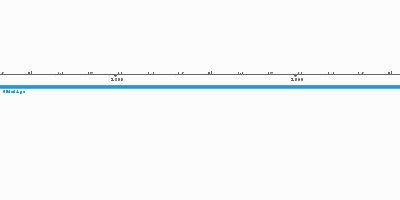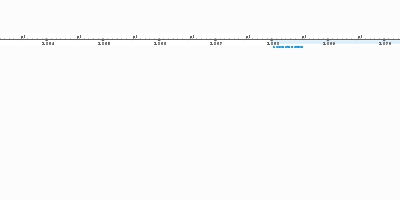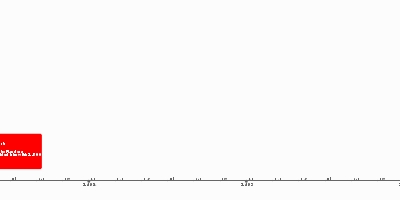Women Civil Rights USA 1865-1992
Category: Historia
Actualizado: hace 3 meses atrás
Autores
Created bygabriella houghton
Attachments
Eventos
Key
Political = Purple
Social = Pink
Economic = Green
Important people = Redposition of women:
- played active roles within church communities
- middle class women, often worked
in domestic services so they had more
time to give to causes like abolition and temperance
- poorer women were more bothered about surviving day-to-day
- westward expansion allowed for women to fill out roles they otherwise
wouldn't be allowed to, setting up a double standard as NA women were
removed from their matriarchy and replaced by men- the end of civil war, gave women the want to do more
and take their experiences from the Civil War and use
them in the public sphere
-the major thing hindering women's rights all throughout the period is, the idea
of separate spheresSeneca Falls 1848
- used to discuss women's suffrage
- inspired by the French Revolution
- led by Lucretia Mott and Elizabeth Cady StantonComstock Laws 1873
- the banning of abortions
and played as a major role to
conraceptivesWomen's Crusade 1873-74
- women took action against saloons
- involved the Women's Christion Temperance
UnionIn Utah and Wyoming
women could votePopulist Party 1891
- represented the disconnected southern
and western farmers
- led by Elizabeth LeaseNational Consumers League 1899
- advocates for safer products and rights
of workers
- to decrease child labour too
- this increased number of working women, which
allowed them to unionise moreby 1900 on 17% workforce
was womenCharity Organisation Society 1900
- appointed women to manage social impacts
as administers in public charaties
- they got to work with local government to give
pension to widdows, mothers, and working women1865 - 1914
- women were expected to
provide for the household and be a mother
- well change was occurring and the number of
children per family dropped from 5 to 3by the 1870s, there were
more boys in schools then girls.
for AA it increased from 10%
to 30%
from 1860s to 1914approximately 2/3 white
children of both genders attending schoolFlapper Era
- a bit of SOCIAL and ECONOMIC
- it led to the objectification of women in adverts
and jobs
- women began to cut their hair short, wear shorter
skirts, drive and smoke, breaking the typical role
of a woman to be conservative and traditional
-however the double standard developed for women
to be more provocative before marriage and chance
to be more demure once marriedMargret Sanger 1916
SOCIAL
- she set up the first ever contraceptive clinic
- got arrested for breaking obscenity laws
- also invented the term for birth controlWorld War 2
- approximately 358 women never returned
from the front line
- used in propaganda and told not to take jobs from men
- post was social standards were returnedBetty Friedan 1963
- feminine mystique1971 Ms Magazine
- feminist magazine for girls
- influenced young girls into wanting more than being
a mother when they are older
- inspired them to want to get jobsRoe v Wade 1973
- gave women the right to their body
- making abortion legalPhyllis Schlafly 1970s
- was active throughout even during the 50s
against men being drafted and family income being taken away
- was against the Equal Rights AmendmentDue to the lack of unity for women it made it harder to
overcome barriers
- the reason they lacked unity is because there was no clear
set idea on what equality for women looked like
was it to have the same rights as men, or was it to be
seen as equals get paid equally, but have considerations
put in place for women's safety in the work place etcRadical Lesbians 1960s
- had the view that women
could only be liberated through
lesbianism50s and 60s New Feminism
- focused on social issues due to the failure
to pass a consolidation of the
Equal Opportunities AmendmentBy 1870 13% of unmarried women
were apart of the work forceWomen's Trade Union League 1921
- tried to organise working women to unite them
to get better working conditions
- achieve this by getting an 8 hour working dayWorld War 1
- allowed married women to work
- they weren't allowed to be doctors or part
of the army
- 1917-1918 1 million women were workingWorld War 2
- as demands for goods increased so
did job opportunities for women
- by 1945 5 million women were working
- 100,000 women were in the armed forced
like Women's Army Corps, Navy, Women's Airforce
- though they did accept lower pay then men for their jobs men got paid $54.61
where as women got paid $31.211946 2 million women were fired from
their jobs in industry to allow men to
to get their jobs backCold War
- gave women more job opportunities yet again
- women were also used in the space race during this time too
- they were excluded from the Astronaut Corps but were used
as human computers for behind the scene workNational Organisation for Women 1966
- NOW was formed to help with social and economic
aspects of women's rights
- it campaigned for the ending of sex discrimination
within the work place
- set out ways to improve women's education and job
opps
- also took care of child chare and abortion issues too10% of free women had jobs in 1865
by 1870 it rose to 15%by the end of the civil war
60% women worked in domestic services
and 1% in white collar workWomen working in domestic services decreased to 18%
and white collar working women increased to 40%
- this didn't appky to AA women though, who often remaind
in domestic servicesby 1914 women made up 2% of unions
even though by this time they made up 25%
of the workforce1840 women in industry was 10%Knights of Labor 1881
offered support to womenMid 1880s
women had organised 113 women assemblies to try
and increase their union membership
- 50,000 women involved800 men got surveyed about their wages
and it was found that men got paid more than women
for the same workEqual Pay Act 1963Fair Labor Standards Act 1938The anti-slavery movement led to women
organising to promote a political causeWomen's Christian Temperance Union 1874
- worked to ban alcohol
- had 27,000 women members in 1880
- led by Frances Willard who persuaded local legislation
on the ban of alcohol by using lobbying and mass meetings19th Amendment
- gave women the right to vote age 21+ however
it didn't do much in the short term as many women would
follow what their husband would vote for, or were uninterestedEqual Rights Amendment 1923
- aimed to guarantee equal rights under
the law regardless of sex
- however wasn't ratified or passed by congress
until 1972New deal didn't directly help women
with legislation specific for them
but it allowed women to begin playing
a more involved role in politicsElanor Roosevelt 1st lady
she encourages women to be in office
Francis Perkins
first lady of the cabinet and secretary for labour
Mary Dewson
- was director for the Women's Division Adversary Committeedespite women becoming more involved
men still ruled most of the legal system
and so even if gains were made politically
they didnt translate to social or economic gainsCivil Rights Act 1964The NAACP 1896
involved Ida B Wells who played a role social
to get anti lynching laws passeddue to women taking role in govenrment
in the new deal it allowed women like
Martha Griffiths to take up a role too becoming the first
female democrat in CongressGeraldine Ferraro 1979-85
- first woman vice president candidate
of a major political partyby the end of the period political awareness had
developed to which, male politicians were more willing to
listen to women's needs and try and target their campaigns
towards them to gain more votesin 1957 women and male votes
were practically equal for the first tiem everBreak with Abolitionists
Equal Rights Association 1866
- this went onto distance the movements
between women's suffrage
- the abolitionists broke from the suffrage movement
showing that AA voters were the majoritywomen had been in the front line of losing jobs
both in federal and state posts and in private
industry to "save jobs for men"Falling wages of the depression hit
domestic workers the hardest and they were
largely unprotected by labour legislation
this included many ethnic groups not just womenthe Public Works Project
- paid for by federal funding
- focused on getting men back to work
- and with wage regulations they often confirmed the wage
gap between men and womenSocial Justice Feminists
- they were too anxious to use their power
to achieve change or rightsFlorence Kelly
- she argued that is was their role
to regulate the industry as a whole
not just for woemnGallop Poll 1936
showed 4/5 of those who were
asked agreed that married women shouldn't work
and take jobs away from single men or married husbandsFederal Emergency Relief Act 1933
- followed financial assistance and homeless
women could seek refuge in city shelterslegislation passed in 1932
made it harder for women to get
jobs in the new deal eraFarm Security Act 1937
- improved conditions of many poorer
southern farmers but did little about the unfairness
of rural lifeThe traditional values continued despite
the change in society during the 20s
- this goes to show that its only in times of
desperation or prosperity where women
would see the most gains-the role of women in the black power
movement brought attention to the
sexist discrimination
- despite the macho posturing of the black panthers
and talk of reclaiming male sexuality doesn't seem
promising to help women
- there was the tendency to see sexism as a white person
issueNation of Islam 1965
- condemned Birth Control as a sin
- referring to it as the deadly pillduring the period pamphlets
were made by radical groups
portraying women and men as equals
- they focused more so on the aims of
child care and making streets safe againBirmingham Bus Boycott 1956
- women played am much larger role in it then
what is assumed
-as well women played am much bigger role in
grass-root civil rights movements throughout the 50s tooBlack Panther Sister
- sister organisation of the Black Panthers
- came togehter to write articles, design posters and
give legal adviesEricka Higgins
- high ranking member of the
organisation in Connecticut
Elaine Brown
- was 2nd only in responsibility of the central
committee
Angela Davis
- organised a rally in San Diego 1967despite discrimination within the group
after the organisation fell Sheeba Haven explained
how BP gave her the chance to find her own strength2% of women were unionist
by 1900urbanisation and industrialisation
offered more job opportunities for
women outside the traditional role
for womenMary Harris Jones
- aka Mother Jones
- struggled for mine workers for 50
years
-organising miners wives, to oppose strike
breaking and famous march of factory
children from Pennsylvania to WashingtonKate Richards O'Flynn
and Rose Paster Strokes
were both very prominent organisers tooeven though industrialisation did
bring more hardships for women
- it allowed for exploitation of cheap immigrant labour
as well as inequality and sexual exploitation
- with this women often would opt for becoming prostitutes
over working in factories due to the conditions.Women were often confined
to unskilled work
such as in textiles and cotton millsSweatshops in the economy of the gilded age had low
wager and hazardous and oppressive
-Successor of the KOL
American Federation of Labor was less
sympathetic to women in the work force and didn't
represent them
- opting to support and represent skilled workers
which many women weren'tearly on women's goals involved 3 things
though they were social aspects they did demand the
vote in order to make these changes happen
the three movements were:
1- abolition
2- temperance/ prohibition
3- suffrageNational Women's Suffrage Association 1869
- NWSA, opposed the 15th amendment that gave
black men the right to vote
- insisting that voting rights be extended to all women and
all African Americans at the same time.American Women Suffrage Association
-to work for women's suffrage in the United States.
-The AWSA lobbied state governments to
enact laws granting or expanding women's right to vote in the United States.
-led by Lucy Stone,National American Women Suffrage Association 1890
- NAWSA formed joining together, creating the first united
movement for women to get voting rights
-through a series of well-orchestrated state
campaigns under the dynamic direction of
- Carrie Chapman CattDaughters of the American Revolution 1890
- only becomes significant later with Elanor Roosevelt
she revoked her membership due to the discrimination
against a black performerJobs for single women but they
were expected to leave them once married
- on top of that women often had to deal with, poor working
conditions, sexual exploitation, long hours etc. so would choose
to work in prostitutionPeríodos
Gilded Age 1875-1902New Deal 1933-38Black Power 1960s




Comments